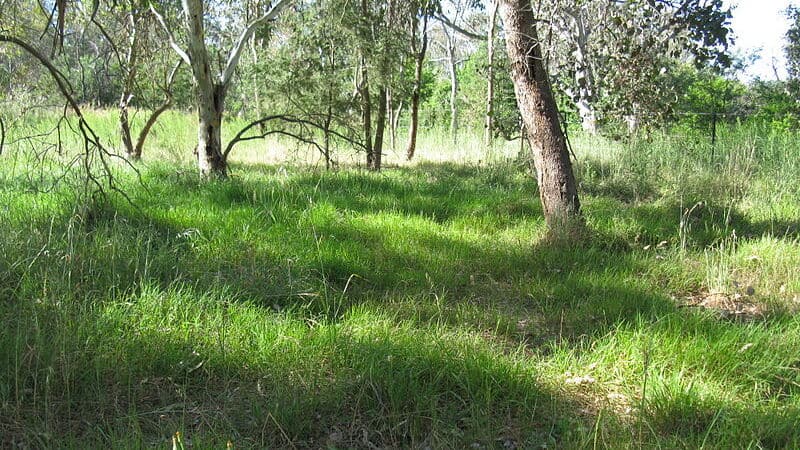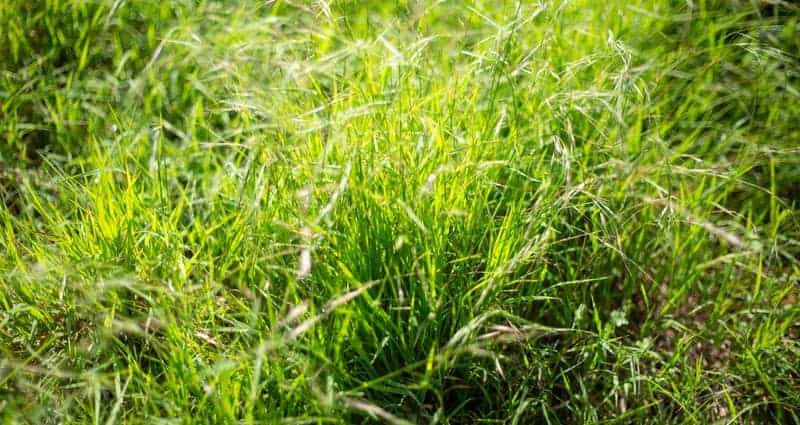Want a native grass lawn? Here’s one excellent option – weeping grass.
These native grasses are persistent and versatile, and are great for acid soils.
The dense foliage and soft leaves result in a very aesthetically-pleasing, high-quality lawn – and a low-maintenance one, too.
Growing weeping grass on a native lawn is very straightforward. It can grow in most kinds of ground but prefers acidic soils. Water well while seeds are establishing, but afterwards, this grass is highly drought tolerant. Plant anywhere from full sun to partial shade. The most important thing to note is not to grow weeping grass in areas of high foot traffic – so don’t use it as path grass! You can mow it down 3-4 times a year, usually in summer (or get a lawn maintenance service to do it for you).
Don’t cry (pun intended) over a missed opportunity for a high-quality lawn.
Here’s how to grow a weeping grass lawn at home – and how to maintain it.
Weeping Grass: Microlaena Stipoides
Also known as ‘Meadow Rice Grass’, this is a common native grass found chiefly in eastern Australia and the wetter parts of South Australia.
It’s perennial, and is adapted to places with high rainfall. You can recognise weeping grass by its lime-green leaves and weeping seed heads.
It usually grows by the roadside or in shady bushland areas.
Seed heads generally ripen from December to May. Weeping grass leaves can reach a height of 30-75cm if left uncut.
Growing Weeping Grass
Location
When it comes to a truly native grass lawn, it’s important to remember that weeping grass and other native grasses don’t tolerate heavy use.
Keep native grass away from areas of high foot traffic. If you plan to have this grass covering large areas, make sure it doesn’t suffer anything heavier than kids’ playtime.
A weeping grass native lawn is best for areas with low to moderate foot traffic, or for surrounding garden beds.
Soil
In general, weeping grasses are suitable with most soil types, but prefer acidic soils.
However, some varieties are adapted for strongly acidic soils as well.
Sun
It can grow anywhere from full sun to partial shade.
Weeping grass is suitable for groundcover under large trees and other big plants.
Tolerance
These native plants are good for most areas since they have high drought and frost tolerance.
Weeping grass also tolerates moderate salt and shade.
Climate
This is a cool-season grass, meaning it prefers areas with mild to warm summers and mild winters.
Uses
Besides a native lawn, these native grasses are used for golf course roughs since the leaves do not grow too tall.
Weeping grass also produces high-quality feed, and so it is used for pasture in areas with acid soils and moderate to high rainfall.
Common animals that eat weeping grass include sheep and cows, while birds will sometimes consume the seeds.
Planting a Weeping Grass Lawn
If you’re growing a weeping grass lawn from seed, sow your seeds in autumn or spring. This will help you take advantage of the cooler weather and the growing season.
Firstly, prepare your existing lawn by spraying it with herbicide to remove existing turf. Then, let the product sit for a few weeks to ensure it has worked.
Level your lawn and top dress or fill any holes. You can use a native garden mix for this. Aerate the soil with a pitchfork if it’s too compacted.
Spread seed evenly over the ground. You can more easily disperse seeds by mixing them with dry soil or sand.
Water well but gently to moisten the ground for germination, about 2-3 times a week.
Do not mulch; instead, cover seeds with a light layer of garden mix if you need to tamp the seeds down.
Ensure your lawn is weed-free, too!
Maintaining a Weeping Grass Lawn
Weeping grass is highly tolerant of grazing and mowing. In addition, it provides persistent groundcover, so you can mow down regularly – about 3-4 times a year.
Water well only while the seeds are establishing. Otherwise, these plants have a high drought tolerance and only need irrigation during extended dry periods.
Microlaena will grow well with or without fertiliser.




